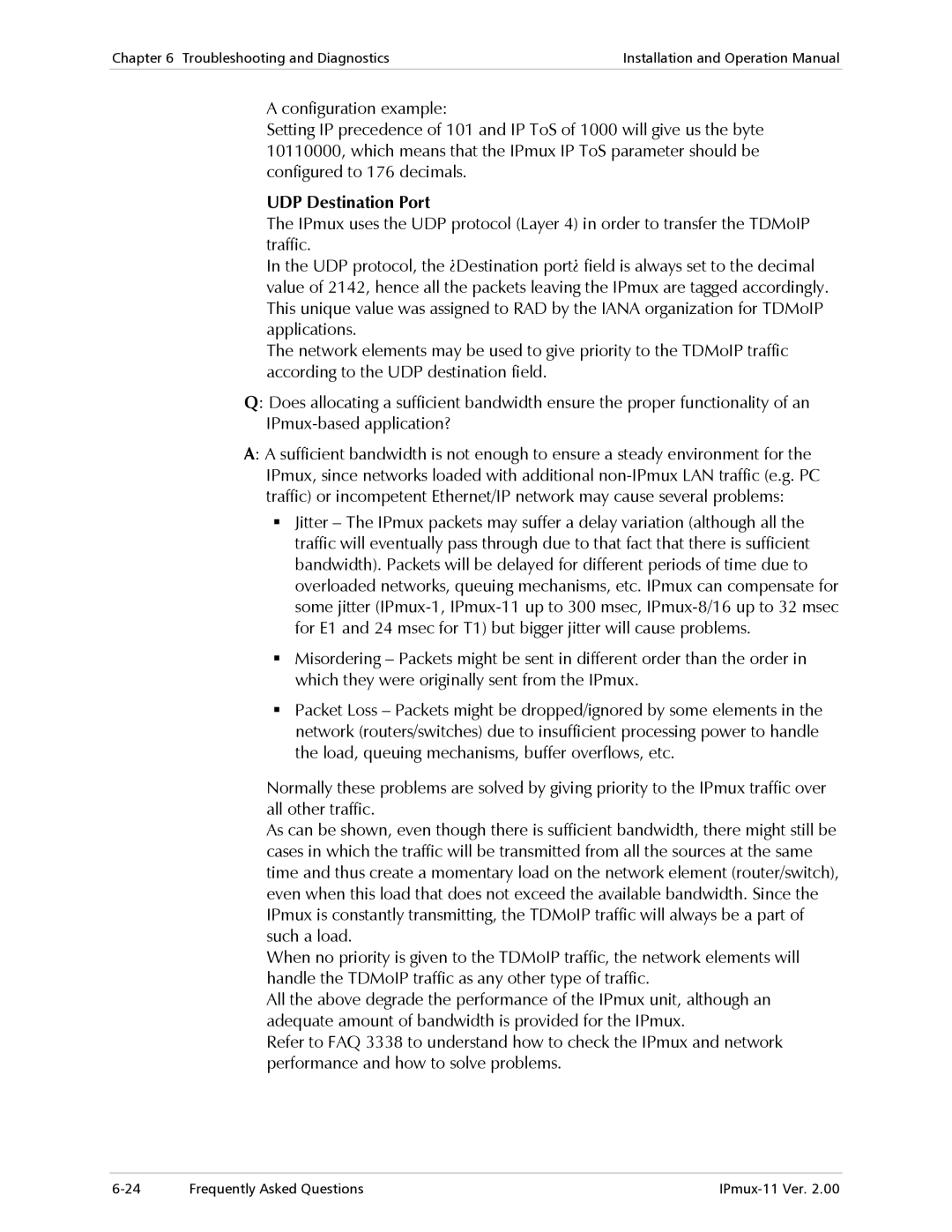Chapter 6 Troubleshooting and Diagnostics | Installation and Operation Manual |
|
|
A configuration example:
Setting IP precedence of 101 and IP ToS of 1000 will give us the byte 10110000, which means that the IPmux IP ToS parameter should be configured to 176 decimals.
UDP Destination Port
The IPmux uses the UDP protocol (Layer 4) in order to transfer the TDMoIP traffic.
In the UDP protocol, the ¿Destination port¿ field is always set to the decimal value of 2142, hence all the packets leaving the IPmux are tagged accordingly. This unique value was assigned to RAD by the IANA organization for TDMoIP applications.
The network elements may be used to give priority to the TDMoIP traffic according to the UDP destination field.
Q: Does allocating a sufficient bandwidth ensure the proper functionality of an
A: A sufficient bandwidth is not enough to ensure a steady environment for the IPmux, since networks loaded with additional
Jitter – The IPmux packets may suffer a delay variation (although all the traffic will eventually pass through due to that fact that there is sufficient bandwidth). Packets will be delayed for different periods of time due to overloaded networks, queuing mechanisms, etc. IPmux can compensate for some jitter
Misordering – Packets might be sent in different order than the order in which they were originally sent from the IPmux.
Packet Loss – Packets might be dropped/ignored by some elements in the network (routers/switches) due to insufficient processing power to handle the load, queuing mechanisms, buffer overflows, etc.
Normally these problems are solved by giving priority to the IPmux traffic over all other traffic.
As can be shown, even though there is sufficient bandwidth, there might still be cases in which the traffic will be transmitted from all the sources at the same time and thus create a momentary load on the network element (router/switch), even when this load that does not exceed the available bandwidth. Since the IPmux is constantly transmitting, the TDMoIP traffic will always be a part of such a load.
When no priority is given to the TDMoIP traffic, the network elements will handle the TDMoIP traffic as any other type of traffic.
All the above degrade the performance of the IPmux unit, although an adequate amount of bandwidth is provided for the IPmux.
Refer to FAQ 3338 to understand how to check the IPmux and network performance and how to solve problems.
Frequently Asked Questions |
